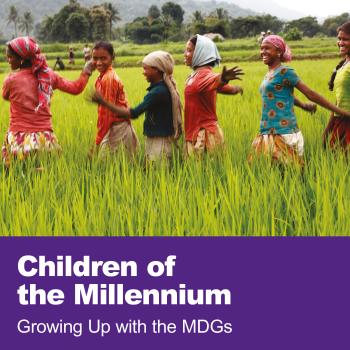Publication Information

At the turn of the century, huge optimism surrounded the global commitment to the MDGs. Many of the goals related to children and childhood, including ending poverty and hunger, expanding enrolment in primary education, and improving access to clean water and sanitation. If we can get things right at the start of a child’s life, the world agreed, we have a chance to stop poverty and inequality being passed down through the generations.
During 2015, Young Lives have been taking stock of the achievements and lessons learned since the adoption of the MDGs, in the run-up to the new Global Goals for Sustainable Development.
Using data gathered from 12,000 children and their families over the timeframe of the MDGs, and in children’s own words where possible, this report from Young Lives looks beyond the ‘big data’ to see what has changed in the reality of children’s lives in the context of the shifts in national policy, priorities and outcomes related to the MDGs.
There have been some important advances, with a reduction in childhood poverty and rise in essential services across many developing countries. However, average numbers cannot tell the whole story; the figures hide discrepancies between countries, as well as between children within countries, and gaps in quality and inclusiveness.

At the turn of the century, huge optimism surrounded the global commitment to the MDGs. Many of the goals related to children and childhood, including ending poverty and hunger, expanding enrolment in primary education, and improving access to clean water and sanitation. If we can get things right at the start of a child’s life, the world agreed, we have a chance to stop poverty and inequality being passed down through the generations.
During 2015, Young Lives have been taking stock of the achievements and lessons learned since the adoption of the MDGs, in the run-up to the new Global Goals for Sustainable Development.
Using data gathered from 12,000 children and their families over the timeframe of the MDGs, and in children’s own words where possible, this report from Young Lives looks beyond the ‘big data’ to see what has changed in the reality of children’s lives in the context of the shifts in national policy, priorities and outcomes related to the MDGs.
There have been some important advances, with a reduction in childhood poverty and rise in essential services across many developing countries. However, average numbers cannot tell the whole story; the figures hide discrepancies between countries, as well as between children within countries, and gaps in quality and inclusiveness.

